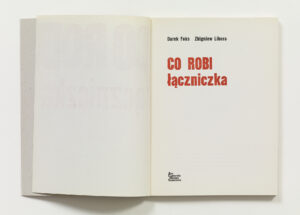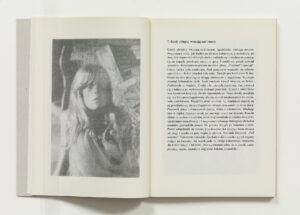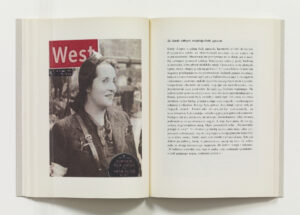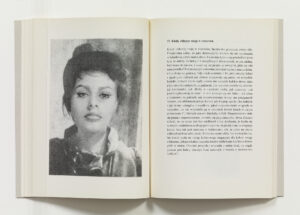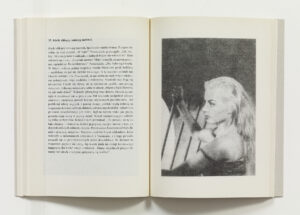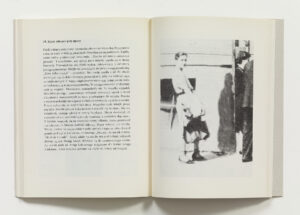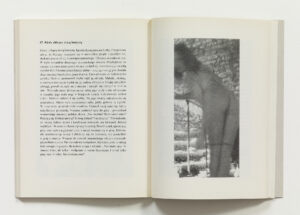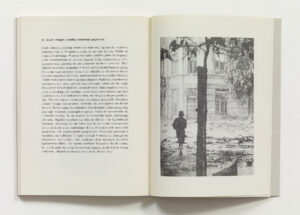The sixty-three chapters of the book allude to the sixty-three days of the Warsaw Uprising. The uprising, which took place in the summer of 1944, was an important World War II operation launched by the Polish resistance in an attempt to liberate Poland from German occupation. Each chapter has a photocollage by Libera. In the montages, he brings together photographs of the ruins which were all that remained of war-ravaged Warsaw and portraits of pop culture stars of the nineteen fifties and sixties. The accompanying text by Foks, tells a story of the fate of the girls and young women who fulfilled the dangerous role of liaison staff in the resistance. However, it is a tale which has little in common with the realities of wartime. The book takes a stand against the rehashed visual templates and narrative platitudes which are applied to major historical events.
In 2006, a kind of appendix was released in the form a small publication entitled “Co robiła łącznika. Książka o książce”.
Sebastian Cichocki (red.), Co robiła łączniczka. Książka o książce, Bytom 2006 https://culture.pl/en/work/what-is-the-messenger-girl-doing-darek-foks-and-zbigniew-libera
author:
Darek Foks, Zbigniew Libera
title:
Co robi łączniczka
year of publication:
2005
photographs:
Zbigniew Libera
text:
Darek Foks
language:
Polish
design:
Justyna Kucharczyk (okładka i strona tytułowa)
publisher:
Ars Cameralis Silesiae Superioris
place of publication:
Katowice
pages:
132
format:
160 x 210
binding:
softcover
printing technique:
offset
print run:
ISBN:
83922555-0-X

